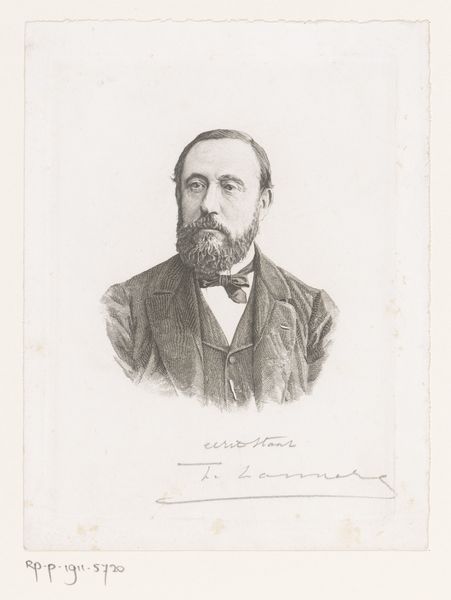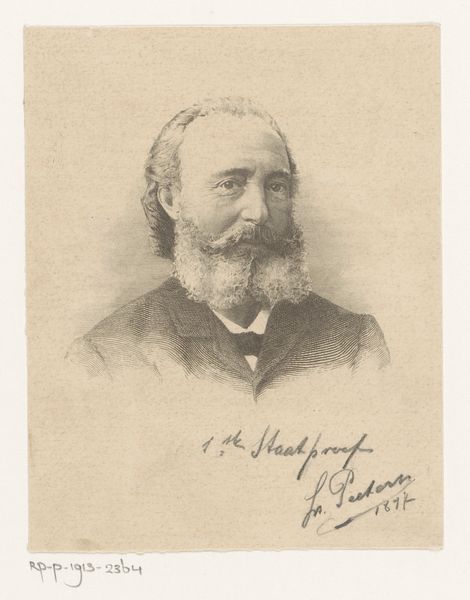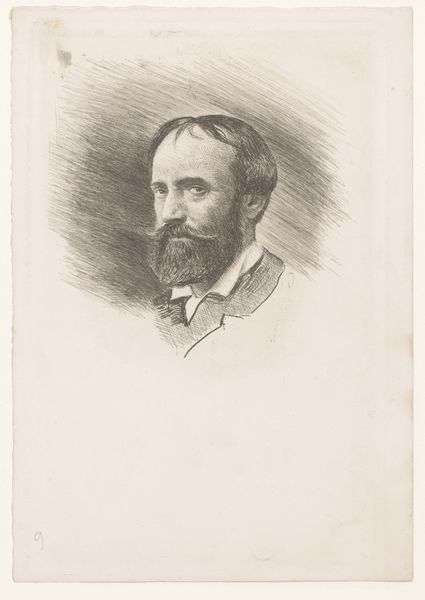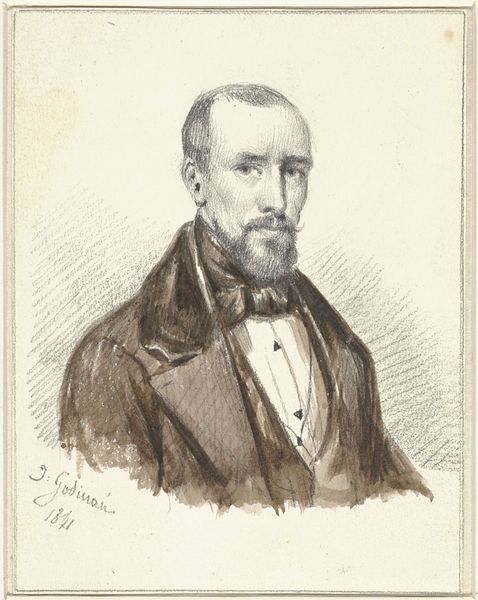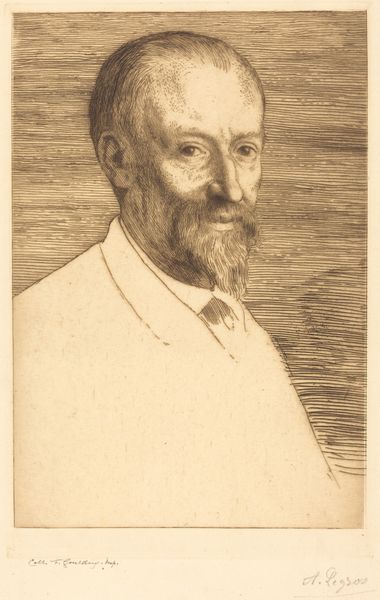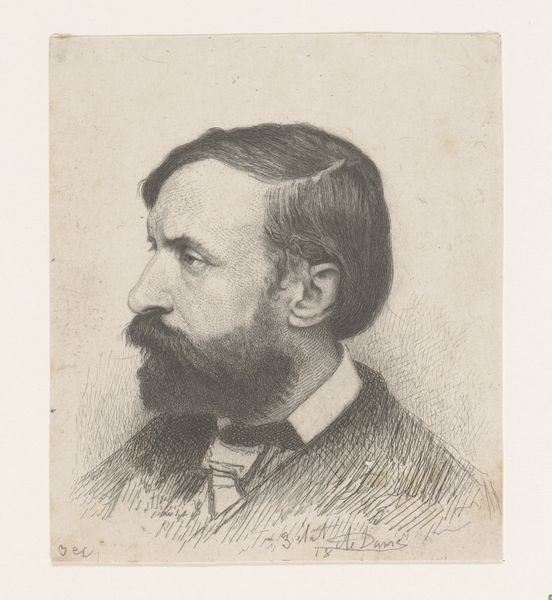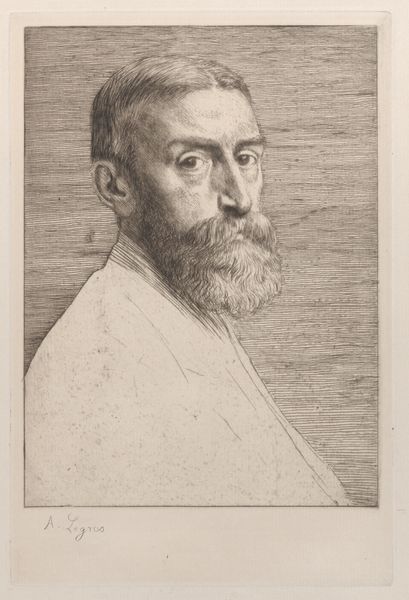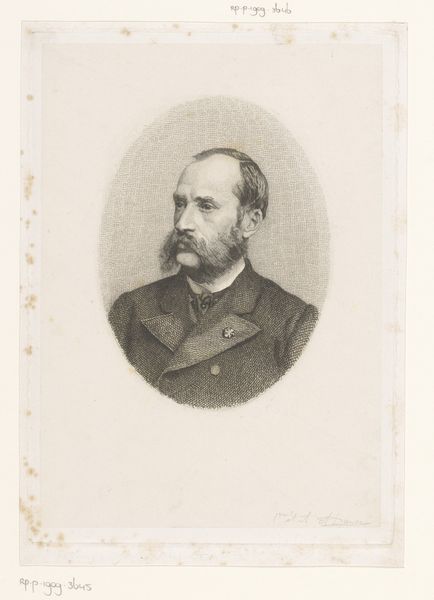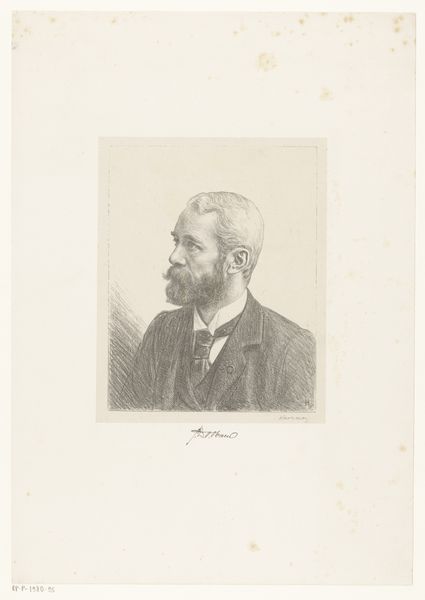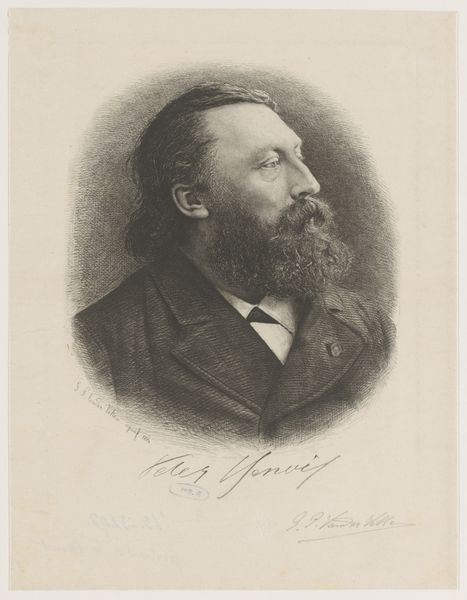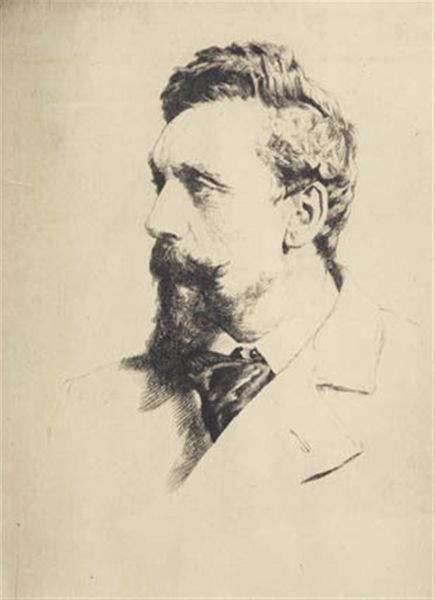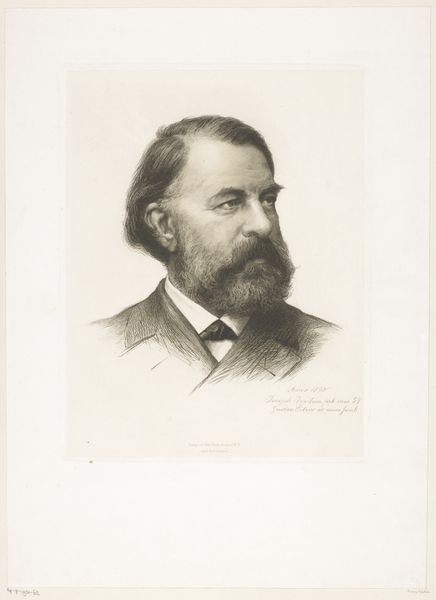
print, engraving
#
portrait
# print
#
portrait drawing
#
academic-art
#
engraving
#
realism
Dimensions: 197 mm (height) x 133 mm (width) (billedmaal)
Editor: We’re looking at a portrait today— "P. C. Skovgaard," from 1875, crafted by Carl Leonard Sandberg. It’s an engraving, and I’m immediately struck by how…stark it feels. All these fine lines creating detail. What stands out to you? Curator: It's interesting you mention "starkness". Consider the context: portrait engravings like this circulated widely in the 19th century through illustrated magazines and books. They were vital tools for image dissemination and shaping public perception. How do you think this accessibility impacted Skovgaard's reputation as a landscape painter? Editor: I hadn't thought of it that way. So, was this a deliberate strategy to build his brand, so to speak, outside of gallery walls? Curator: Precisely. Think about the institutions that usually define "art" - academies, galleries, wealthy patrons. Sandberg’s engraving bypasses some of that, bringing Skovgaard directly to a wider audience. It also presents him in a certain light. What does the portrait communicate about Skovgaard the *person*, versus Skovgaard the *artist*? Does Sandberg perhaps want us to read his artistic character through his face and dress? Editor: Well, his serious expression, combined with his professional attire, suggest respectability and dedication. It creates a persona just as carefully as any painted portrait in a gallery. And it allowed wider consumption. I’m now rethinking who got to *own* art in this period and how. Curator: Exactly. Sandberg's print democratizes access, and reveals how power circulates beyond formal art spaces. Consider that Sandberg was engraving to help establish an artist who defined "Danishness" and its relationship with its land at a moment of massive change in national identity, the public role of such prints is critical. Editor: That's fascinating! Thanks; I hadn’t considered the socio-political impact of reproductive prints like this before. It offers a new perspective of our current ideas about art and representation.
Comments
No comments
Be the first to comment and join the conversation on the ultimate creative platform.
